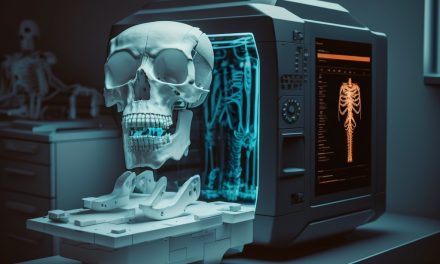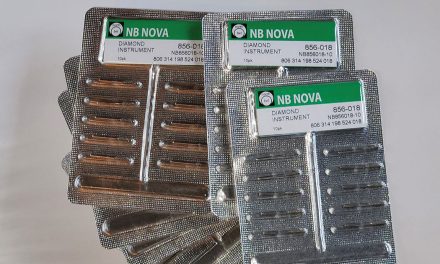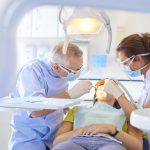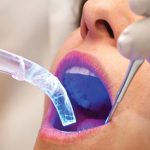Robo-Smiles: Embracing Australian Dental Surgery’s Cutting-Edge Future
The use of robotics in healthcare is in its infancy, the benefits will be transformational in the future, most likely in ways that we cannot even envisage today. In medicine, robots are increasingly being used in a range of areas including surgery, diagnostics, rehabilitation, training and patient care.
Already, the use of these early robotic systems as part of surgery often represent the highest standard of care due to the benefits of enhanced planning, increased precision and improved patient experience. For example the da Vinci(1) robot by Intuitive Surgery Inc is well known and used in millions of urology, gynaecology, head and neck surgical procedures worldwide.
The use of robots in general medical surgery is further advanced than in dentistry. In dental surgery, most current activity is in research. Some applications have made their way into clinical practice, usually in pilot use cases(2), with a few commercially available products. This article aims to review the current state of development and use of robotics in surgery for orthodontics and prosthodontics.
Robotics in Australian Dentistry and its Significance
Robotics in dentistry refers to the use of advanced computer technology and robotic systems to assist dental professionals in performing various dental procedures with improved efficiency, accuracy and safety. These systems range from fully automated robots to semi-autonomous systems or robotic assistants that are operated by a human operator.
In the future, technology will strengthen trustworthiness, repeatability, accuracy and efficiency in dentistry. Cutting-edge dental technologies such as medical robot systems and specialised AI will be more widely available. They are predicted to expand our knowledge of disease mechanisms, enhance risk-assessment strategies, diagnosis, and disease prediction, ultimately leading to superior treatment outcomes. Technology applications will also eventually also open up access to high-quality dental care to millions worldwide as the cost of the technologies dramatically reduces(3) .
The structure and provision of dentistry are believed to hinder the development of solutions compared to the pace in general medicine. Specifically, dentistry in Australia is operated primarily by semi-autonomous individual practices or groups of practices, whereas medical services are provided via direct government funding and purchasing is more centralised. The lower individual purchasing power of dental practices acts as an inhibitor to entrepreneurs looking at the potential of funding research and commercial developments for the dental marketplace.
Further, the relative scarcity of scientific evidence for their benefits, results and cost-efficiency, hinders a proper evidence-based approach to their adoption. On the plus side, there appears to be more open-source software applications being used for the design of robots and robot control, signs of a promising move towards making dental robotics more affordable and thereby accessible. For surgical applications, robotic technologies appear to be currently most frequently found in prosthodontics and orthodontics.
Enhanced Precision for Prosthodontics
Robotic systems can provide enhanced precision and accuracy in planning and performing dental procedures. For example, the Yomi®(4) robot system by Neocis is used in dental implant surgery to guide the placement of implants with greater precision and accuracy. This system uses real-time haptic feedback and computer-assisted navigation to ensure that the implant is placed in the correct position, angle and depth, thereby ensuring that it integrates properly with the surrounding bone.
The haptic feedback system provides physical guidance to the dentist during surgery, allowing them to use this feedback to ‘feel’ the boundaries of the surgical area and the placement of the implants. It provides resistance and guidance to the dentist’s hand movements, making the surgery more accurate and efficient. Yomi® offers workflows to match the treatment preferences of individual dental teams, with the complete plan incorporating numerous features. According to Neocis, Yomi® is the only Food and Drug Administration (FDA) approved dental surgery system. It is currently only available in the USA.
In support of the efficacy of the technology used by systems including Yomi ®, one study validated the human-robot collaborative dental implant system (HRCDIS) as a feasible alternative to using a fixed nail system. It found this innovative method for guiding the hand reduced error and avoided injury to patients(5). Another study investigated guided innovations and HRCDIS surgery and verified its uses including for visual navigation, provision of haptic guidance for implant treatment planning, osteotomy preparation and implant placement(6).
Consistency and Standardisation for Orthodontics
A relatively popular area of study of dental surgery involving robotic systems is in the area of orthodontics. The use of a robot to bend an arch wire has been shown to be a fast, reliable and consistent process that increases treatment precision, effectiveness and efficiency compared to conventional arch wire production. It reduces the treatment duration and the patient discomfort. Similarly, when using customised brackets produced by robots, the treatment efficiency and effectiveness can be improved by overcoming individual tooth morphology variations and by accurate virtual planning of individual tooth movements.
An example of this application is SureSmile® by OraMetrix(7). It involves the use of proprietary robotic technology in its process of creating customised archwires for each patient, improving the quality and efficiency of treatment. SureSmile® utilises 3D imaging and treatment planning to create a virtual model of the patient’s teeth, which allows orthodontists to plan and execute treatment with greater precision and accuracy than traditional orthodontic methods. The system also allows orthodontists to monitor progress more closely and make adjustments more easily. SureSmile® has been shown to reduce treatment time by up to 30% compared to traditional methods, and to improve the effectiveness of orthodontic treatment. This product is available in Australia.
Another example is the ORTHOROBOT® system owned by Orthorobot Medizintechnik GmbH in Vienna, Austria. The ORTHOROBOT® system is a robotic orthodontics system that uses a robotic arm and advanced imaging technology to guide the placement of orthodontic brackets and wires with greater accuracy and speed than traditional methods. The system has been shown to be effective in reducing the time and cost of orthodontic treatment, as well as improving the accuracy of tooth alignment. The ORTHOROBOT® system is said to be more comfortable for patients because the robotic arm can place the brackets and wires with less force(8). The ORTHOROBOT® system appears to be currently available via a handful of selected Dental professionals in Sydney and Melbourne.
There is some evidence to suggest that ORTHOROBOT® is effective in aligning teeth. One study found that ORTHOROBOT® was more effective than traditional fixed braces in aligning teeth in a group of adults. The study found that ORTHOROBOT® patients had a smaller average tooth movement error and a shorter treatment time than fixed brace patients(9).
A separate study by the same research group found that ORTHOROBOT® was effective in aligning teeth in a group of children. The study found that ORTHOROBOT® patients had a similar average tooth movement error to fixed brace patients, but they had a shorter treatment time(10).
Adoption of robotics in dental practices in Australia
The field of robotics in dentistry is in its early stages and is rapidly evolving, and we can expect to see more sophisticated and advanced robotic systems being developed in the future. Overall, the use of robotic systems in dentistry has the potential to improve the accuracy, efficiency, and safety of dental procedures. As the cost of robotic systems decreases, it is likely that their adoption in dental practices will increase. This could lead to a number of benefits for both patients and dentists, including improved patient outcomes, reduced time and costs, and reduced pain and discomfort.
As dental professionals, it is essential to stay up-to-date with the latest advancements in technology and evaluate the potential benefits and limitations of incorporating robotics into practice.
Note – This article is not sponsored or written by any of the mentioned suppliers.
Sources
- https://www.intuitive.com/en-us/about-us/company
- Jasmin Grischke, Lars Johannsmeier, Lukas Eich, Leif Griga, Sami Haddadin, Dentronics: Towards robotics and artificial intelligence in dentistry, Dental Materials, Volume 36, Issue 6, 2020, Pages 765-778, ISSN 0109-5641, https://doi.org/10.1016/j.dental.2020.03.021.
- Smith, A., Jones, B., & Brown, C. (2022). Use of robots in dental surgery increases. Dental Economics, 102(1), 22-27.
- https://www.neocis.com/
- Kang-jie Cheng, Tian-shu Kan, Yun-feng Liu, Wei-dong Zhu, Fu-dong Zhu, Wei-bin Wang, Xian-feng Jiang, Xing-tao Dong, Accuracy of dental implant surgery with robotic position feedback and registration algorithm: An in-vitro study, Computers in Biology and Medicine, Volume 129, 2021, 104153, ISSN 0010-4825, https://doi.org/10.1016/j.compbiomed.2020.104153.(https://www.sciencedirect.com/science/article/pii/S0010482520304844)
- Rawal S., Guided innovations: Robot-assisted dental implant surgery. J Prosthet Dent. 2022 May;127(5):673-674. doi: 10.1016/j.prosdent.2022.03.029. Epub 2022 May 26. PMID: 35643826.
- https://www.dentsplysirona.com/en-au
- The OrthoRobot System: A Novel Robotic-Assisted Device for Orthodontic Treatment” by Liu et al., (2020), The Journal of the American Dental Association
- McGuire, M. J., Fisher, J. M., Williams, D. A., Ehrlich, R. M., & Bader, D. A. (2018). A randomized controlled trial comparing the efficacy of OrthoRobot and traditional fixed braces in adults. Orthodontics & Craniofacial Research, 21(3), 215-222. doi:10.1111/ocr.12486
- McGuire, M. J., Fisher, J. M., Williams, D. A., Ehrlich, R. M., & Bader, D. A. (2019). A randomized controlled trial comparing the efficacy and efficiency of OrthoRobot and traditional fixed braces in children. The Angle Orthodontist, 89(4), 661-668. doi:10.1043/aot-07-258R1
Author & image credit
Michelle Mason















